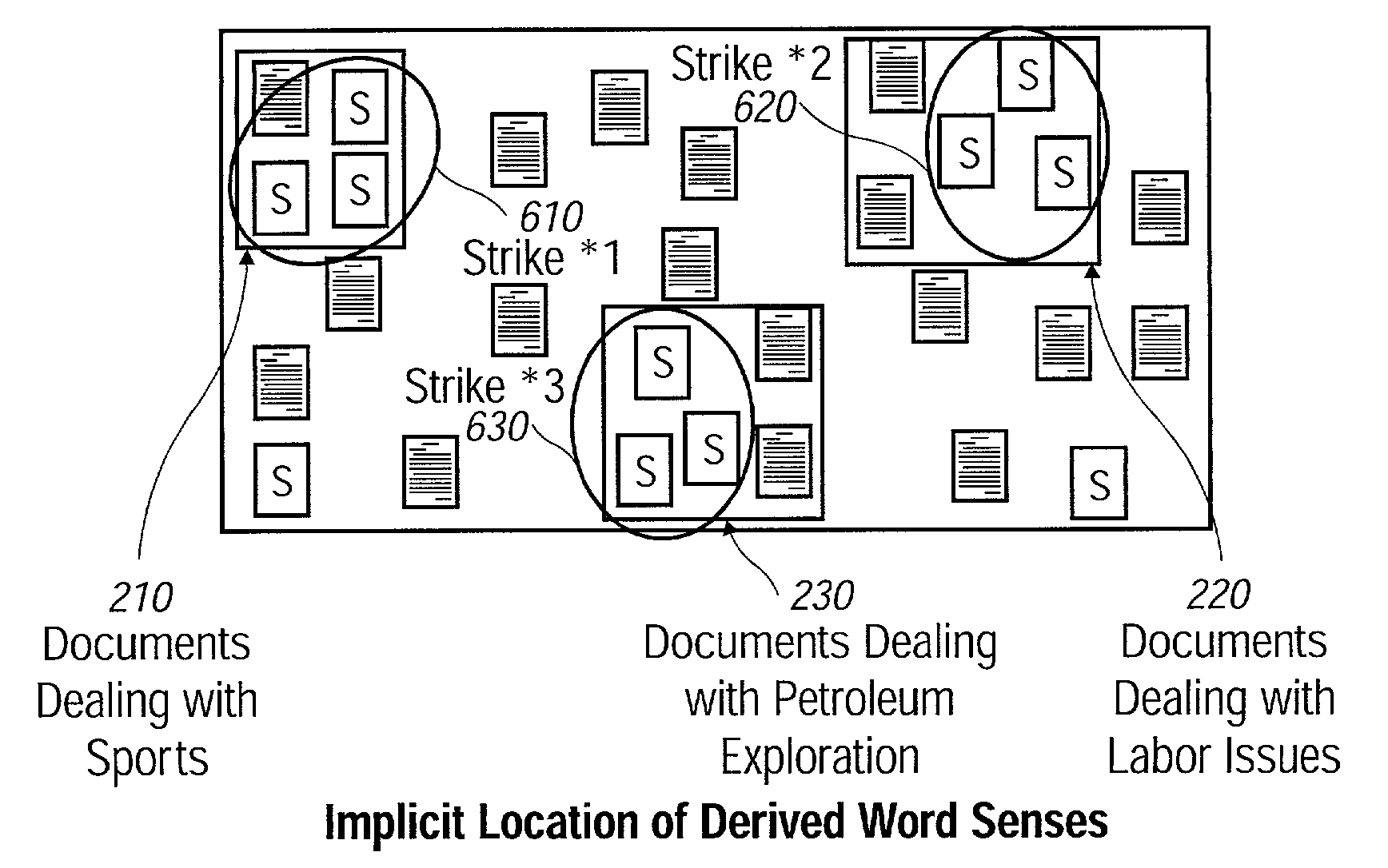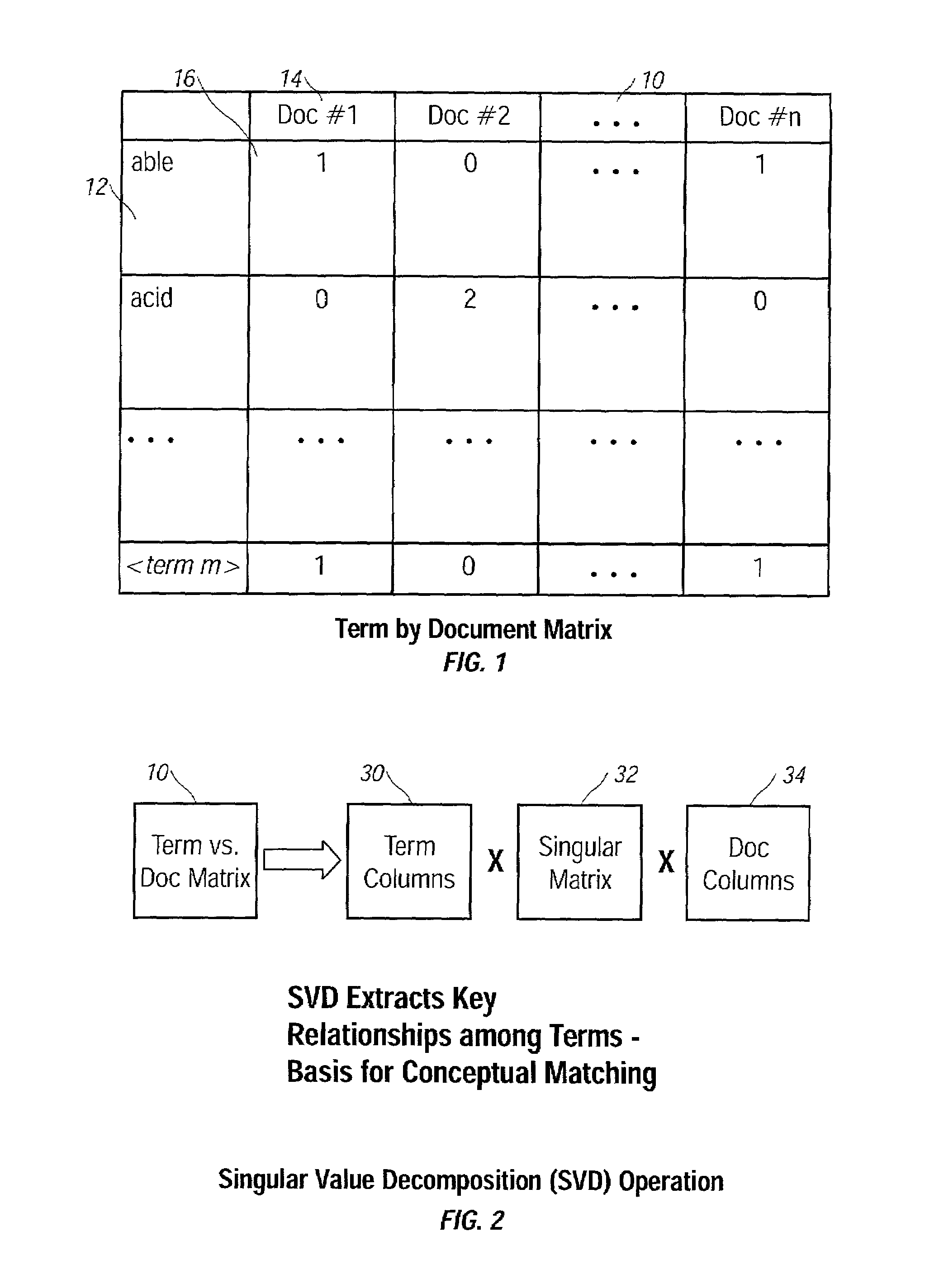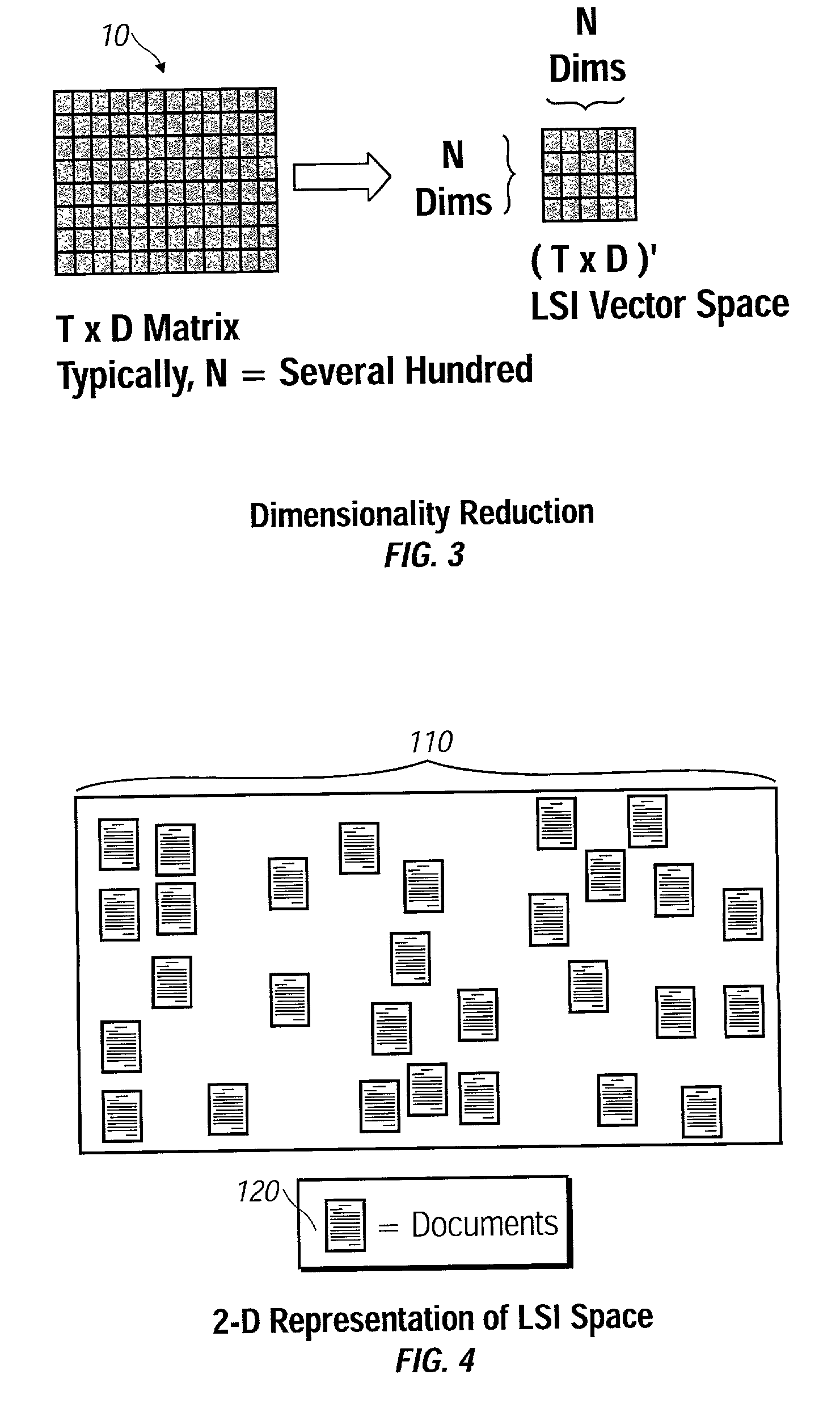Word sense disambiguation
a technology of word sense and disambiguation, applied in the field of word sense disambiguation, to achieve the effect of compromising performan
- Summary
- Abstract
- Description
- Claims
- Application Information
AI Technical Summary
Benefits of technology
Problems solved by technology
Method used
Image
Examples
Embodiment Construction
[0047]The intended sense or meaning for a term is best determined considering the context in which it is appears. Preferred embodiments of the present invention make essential use of a vector space representation of the text passages, i.e. textual context, in which the terms to be disambiguated appear.
[0048]In the generation of the vector space, the following pre-processing steps may be applied to the text:[0049]removal of frequently-occurring words such as the, and, and of, that have little contextual discrimination value, i.e., stop words;[0050]treating certain combinations of terms (e.g., United States) as a phrase;[0051]splitting of hyphenated terms;[0052]word stemming, i.e., reducing words to a root form (e.g., clears, cleared, clearing all being reduced to the stem clear).
The extent to which any or all of the above pre-processing steps are applied will depend on the application.
[0053]Although other vector space representations could be used for this purpose, the technique of L...
PUM
 Login to View More
Login to View More Abstract
Description
Claims
Application Information
 Login to View More
Login to View More - R&D
- Intellectual Property
- Life Sciences
- Materials
- Tech Scout
- Unparalleled Data Quality
- Higher Quality Content
- 60% Fewer Hallucinations
Browse by: Latest US Patents, China's latest patents, Technical Efficacy Thesaurus, Application Domain, Technology Topic, Popular Technical Reports.
© 2025 PatSnap. All rights reserved.Legal|Privacy policy|Modern Slavery Act Transparency Statement|Sitemap|About US| Contact US: help@patsnap.com



